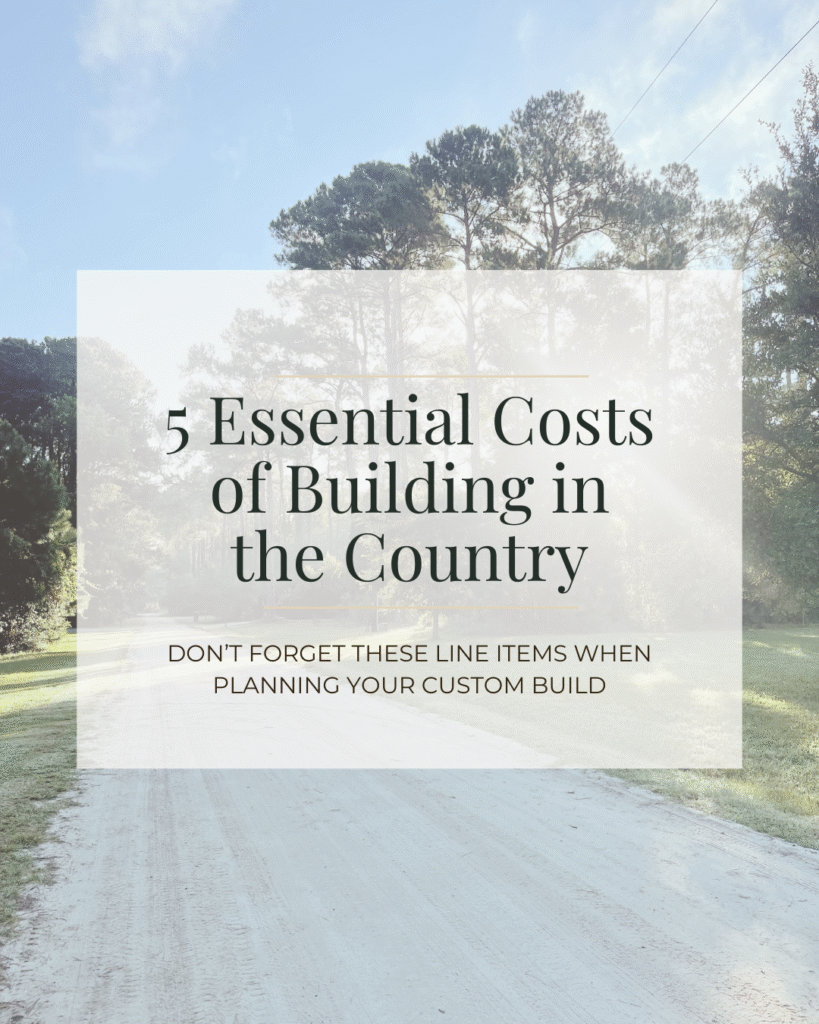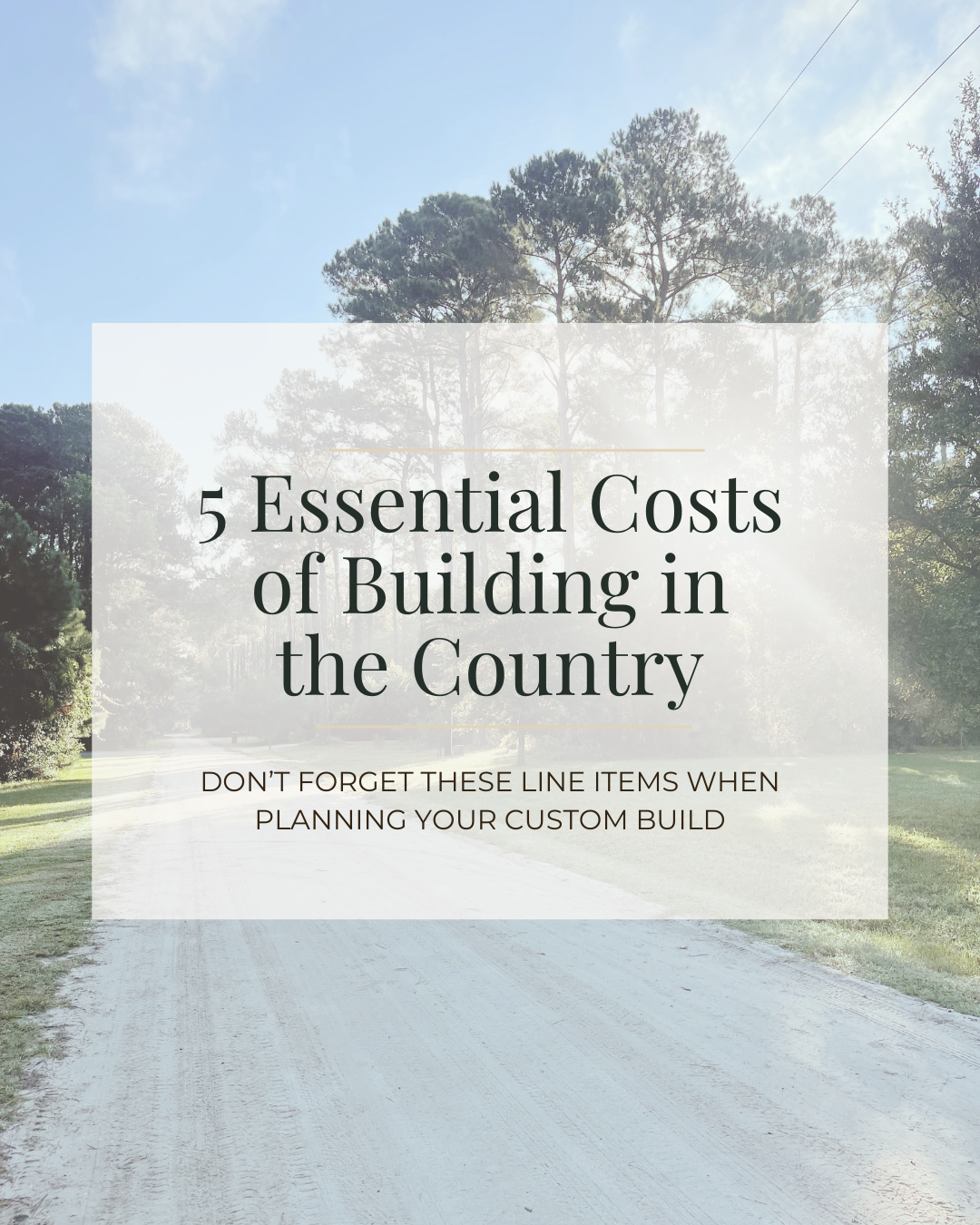A Note on Country-Coastal Living
I think it’s worth trading Target runs for tractor rides — but country life comes with a few “inconveniences” (read: essential line items) when you build without town utilities. We also went coastal, which added a few more zeros in places we didn’t expect. Same house plan, acreage, and square footage can look very different depending on where your land sits.
I hope this helps you plan with eyes wide open.
Dream Home Planning (the unskippables)
When you start dreaming, it’s easy to focus on paint colors, floor plans, and holiday décor. If you’re building in the country (on acreage or outside a subdivision), a handful of costs show up before framing begins. They aren’t optional; they’re just part of the process. Once you know them, they’re far less intimidating — and way easier to budget.
Here’s what we learned first-hand:
1) Land Clearing
Even if a lot looks “pretty open,” clearing trees/brush and grading adds up fast. We shopped around and spent $8,000 (quotes ranged $8k–$20k+).
May also need: tree survey + tree/removal permits (surprise line item).
Our lot: 1.2 acres.
2) Well Water
No city hookups? You’ll need a private well. Ours landed about $8,000 (not very deep; depth and geology drive cost).
Don’t forget:
- Running electric to the well
- Water softener/filtration once you move in
Those pushed the final number higher than expected.
3) Septic System
Country = no sewer. Septic can run tens of thousands. Coastal water table meant we needed an engineered system: ours was $38,000.
Pro tip: Even with a builder, the homeowner often files applications/permits with DHEC (South Carolina Department of Health and Environmental Control).
Not glamorous, 100% necessary — and commonly under-budgeted by first-timers.
4) Foundation
Massive variable. Our lot is in a flood zone, so we elevated the foundation — which shaped our floor plan (cheaper to build up than out) and ate $80,000+ of the budget.
Elsewhere, soil tests, grading, or special engineering can shift foundation cost quickly.
5) Electric Setup
Your builder’s electrical package may not cover everything. We paid:
- $3,000 for extra outlets, switches, and flood lights not in the base package
- $4,000 to the power company to run service from the road + set a temporary pole
(Our home is ~150 ft from the road for reference.)
Those two lines were a wake-up call.
Budgeting for Your New Build
These aren’t “hidden” costs — they’re essential to country-coastal building. Budget them early and the rest of the process feels far more manageable (and exciting).
I made a FREE Home Build Budget Tracker — the exact Google Sheet I wish I had on day one. It helps you plug allowances, log actuals, and see variance so surprises don’t snowball.
Prices and timelines vary by county, soil, and site conditions. This article shares our family’s experience in the rural/coastal South and is for education only—not financial, legal, or construction advice. We are not affiliated with Schumacher Homes.





